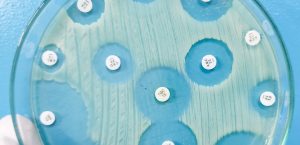- SIWI – Leading expert in water governance
- /
- Latest
- /
- Creating new incentives for responsible manufacturing of antibiotics
Creating new incentives for responsible manufacturing of antibiotics

A new framework can influence the way the antibiotics manufacturing industry operates and avoid the spread of antimicrobial resistance. In an interview*, SIWI's pharma team answers how.
The Responsible Antibiotics Manufacturing Platform (RAMP) is operating to create new incentives based on criteria that define responsible manufacturing.
The release of antibiotics from manufacturing waste streams into the environment poses global health and business risks. Yet, it remains a challenge to bring about change for two reasons. First, there is a lack of jointly defined objectives and access to verified information that shows progress towards reduction in antimicrobial resistance. Second, there is a lack of enabling conditions that would incentivise and drive demand for improved industry practice.
In an interview with Nicolai Schaaf (NS), former Team Lead for Water and Pharmaceuticals, and Iris Panorel (IP), Programme Manager at the Stockholm International Water Institute, we discuss RAMP’s newly developed framework.
What is the role of water governance in reducing the risk of spread of antimicrobial resistance?
IP: Water is central to reducing the risk of spread of antimicrobial resistance (AMR). Access to clean water and sanitation is the most basic step in protecting human health from infectious diseases and reducing the use of antibiotics. On the other hand, contaminated water sources can act as hotspots and vectors of resistant genes and pathogens.
When it comes to the challenge of AMR, it arises from the lack of collective action by responsible stakeholders. As water plays a central role in addressing this challenge, at SIWI we see the need for (global) water governance, and the need to prioritize development of policies and their implementation.
NS: The main problem in the space of pharmaceuticals and antibiotics in the environment is that there are no science-based standards. This means that all the engaged stakeholders are pioneering and covering new ground, without a harmonized outcome. Approaching the challenge from a water governance perspective can help to create the right structures in place.
What is the challenge that RAMP attempts to address?
IP: Most antibiotics that enter the environment and significantly drive AMR, come from usage (for humans and animals) and improper disposal of medical waste or unused medicines. RAMP’s goal was to address localized water pollution from manufacturing of antibiotics, which is a preventable driver. Specifically, the exposure of bacteria to selective concentrations that trigger AMR.
Currently, there is a lack of consensus on what responsible antibiotics manufacturing across the value chain should be. RAMP’s goal in this framework is to synthesize and connect the roles and needs of different stakeholders to promote policy changes, and create enabling conditions for improved industry practice.
More concretely, how did RAMP engage with stakeholders?
NS: The character of our work is that we helped stakeholders to understand their individual roles and responsibilities, which form part of a larger picture to combat AMR. No one can solve this challenge alone.
There is a critical need to understand that physical implementation of good practice takes place at the factory level. But in the absence of independent standards, we need to define what needs to be done and how it is going to be implemented, and RAMP is facilitating this dialogue with the industry, solution providers, regulators and scientists.
IP: RAMP has prepared a framework that takes into account different perspectives of relevant stakeholders from the supply and demand side of the antibiotic manufacturing chain. This is an attempt to define and harmonise criteria for responsible antibiotics manufacturing, that is scientifically backed, and fits the purpose of preventing the risk of AMR.
Our proposal for independent criteria is currently undergoing consultation with scientists, UN Agencies, procurers and industry.
What are the key features of the framework?
NS: Inspired by environmental regulation of Industry Emissions Directive and Indian Zero Liquid Discharge policy, the framework recommends building the standard based on targeted interventions and best available technologies, in addition to the established method of measuring concentrations of active pharmaceutical ingredients (APIs).
The framework finds a balance between the core objective of safe discharge limits and environmental concentrations, and the technical achievability and verifiability.
What do you hope to achieve with this framework, and who is it intended for?
IP: The framework is created to help procurers integrate environmental aspects in their sustainable procurement tools that is verifiable. By taking into account this concrete requirement in their tenders, they can incentivize those companies in the supply chain that are capable of demonstrating good manufacturing practices of antibiotics.
NS: The criteria of the framework will be the connector between the required physical improvements in manufacturing and how policy and market instruments including public procurement can utilize this approach for sustainability criteria.
*This article was first published in Baltic Sea Pharma Platform, Newsletter 1/2023.
Related resource
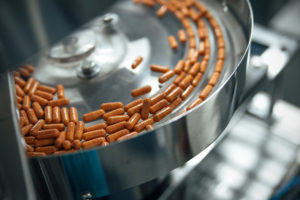
Responsible Antibiotics Manufacturing Platform (RAMP) Framework
- Pharmaceuticals and water
Most recent
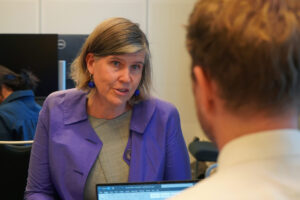
Bridging Borders: A Conversation with Meike van Ginneken
- Transboundary Water Cooperation
- Water cooperation
- Water and Peace
- Water diplomacy
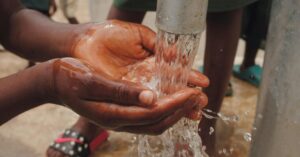
Transforming relations through WASH access
- Water, Sanitation and Hygiene (WASH)
- Water and Peace
- Resilience through water
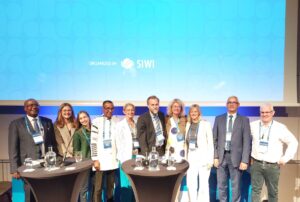
Reflections from World Water Week 2024: Unlocking Water Cooperation Solutions
- Human rights and water
- Indigenous knowledge
- Transboundary Water Cooperation
- World Water Week
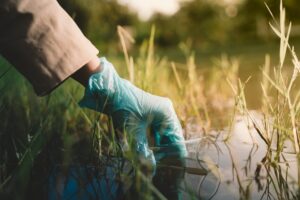
How can we make the manufacturing of antibiotics safer?
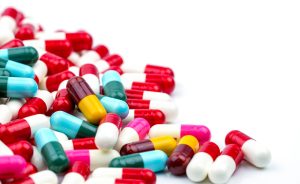
We need to incentivize measures against antimicrobial resistance

145 participants attend webinar co-hosted by RAMP
